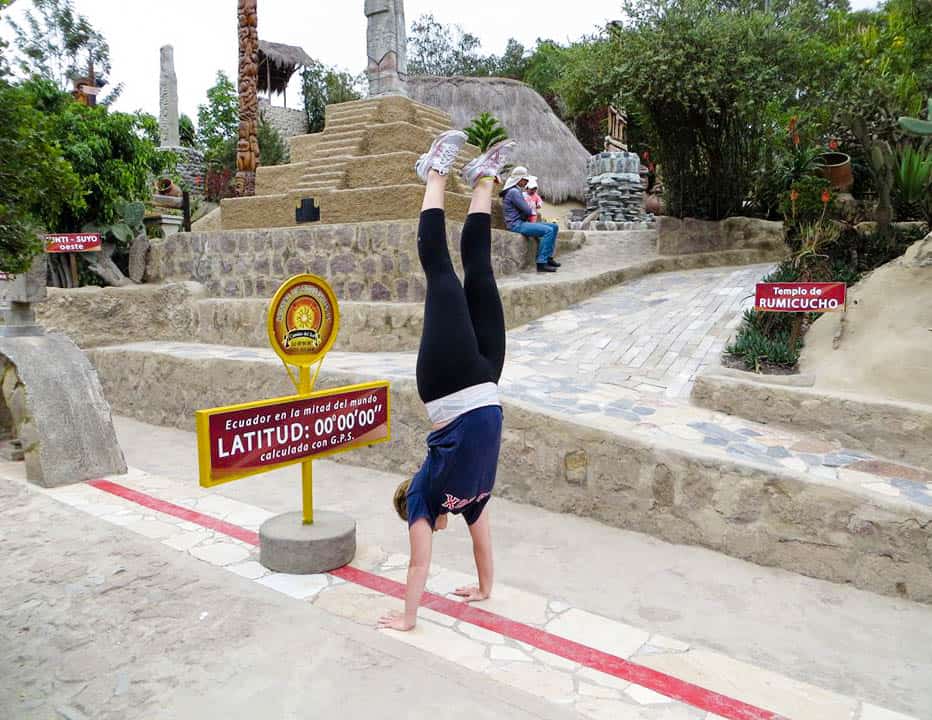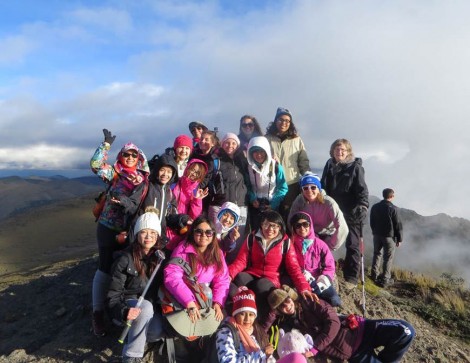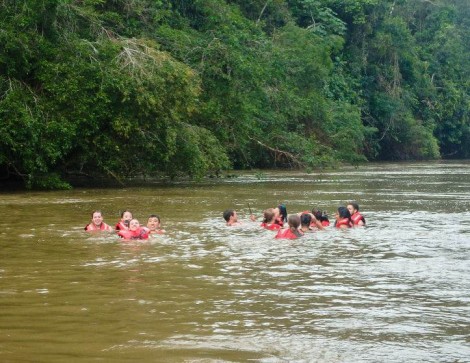From the months of September to April, many students at U of T remain within the vast social, academic, and professional network of the university and the Greater Toronto Area. Across all three campuses, U of T students are constantly undertaking remarkable experiences. Perhaps, though, the full potential of our community’s zest for life and sense of exploration is most evident in the four months between the end of the winter term and the beginning of the fall. This summer series covers but some of the adventures and challenges of U of T’s bold and ambitious globetrotters.
Chapter four:
On their first day in the Galapagos, the U of T Summer Abroad class dropped off their bags at the hotel and then headed straight to town. As they passed by the water, the group caught sight of a sea lion bathing. A hundred metres later, they came to a beach where they were met by a pod of three hundred sea lions. This was just one of the memories from the Ecuador program that Katie Masters, a fifth—year biological anthropology student, recalls enthusiastically.
Masters participated in the U of T Summer Abroad field course on ecology and conservation in the Amazon, Galápagos, and Andes, before visiting her family in Bermuda, and then finally heading back to Toronto in August to work for the intramural games department as an intramural game manager co-ordinator. Despite the 6:00 am daily wake-up call, Masters has no complaints about the research excursion. “I loved every moment of the trip,” she said.
Although the program was only four weeks long, strong relationships formed between participants: Masters said that, “[The] third night together in the Andes, we were staying with the Achingan people, and they had us all up dancing round and around in circles. Two people from our group were dancing with this older Achignan lady and they just kept going and going! It also made us all realize how close we had all become so quickly.”
Masters also noted the advantage of working closely with her professors, while abroad — something that does not always happen easily in large classroom settings at U of T.
“I was so much more comfortable asking questions and talking to my professors as we were in a smaller learning environment,” said Masters, adding, “I literally don’t have the vocabulary to express my extreme love and respect for Barbika [Dr. Barbara Murck and Dr. Monika Havelka, the U of T professors teaching the course], and during course selection this year I looked specifically for the classes that they teach, as they teach with such love and enthusiasm for their subjects.”
The course, which is run through Woodsworth college’s Summer Abroad program, is open to students from all three U of T campuses, and requires no prerequisites. Based in Cumbaya, about 30 minutes from Quito, it consisted of many hikes and day trips, sometimes two or three days in length, and some of which could be physically demanding. These challenges did not seem to faze Masters, however.
“We hiked Cotopaxi and Chimborazo which are both very famous volcanoes — mount Chimborazo is actually the highest peak from the center of the earth. The altitude made the hikes extremely challenging, especially as we got higher up,” Master described, adding, “When we hiked to the snow line of Cotopaxi. It took 45 minutes for us to climb 600 meters because the air was so thin and it was so hard to breath. It was honestly the most amazing feeling though once I reached the top, and it was a real bonding experience as we were all supporting each other during the climb, and encouraging each other to keep going.”
Masters also recounted the wildlife that she was able to experience, from swimming with sharks to catching bats with a bat specialist from the University of San Francisco Quito. She went on to describe some of the exotic animals the group encountered — red Sally Lightfoot crabs, sea turtles, blue-footed boobies — “black and white sea birds with bright blue feet that would do this funny little dance to find their mate!” — black tip reef sharks, land iguanas, a large venomous banana spider, and many more.
Masters, whose family has lived in Bermuda for over 400 years, has previously worked in the education department of Dolphin Quest Bermuda, and hopes to do research or conservation for BAMZ (Bermuda Aquarium Museum and Zoo), BIOS (Bermuda Institute for Ocean Sciences), or the BUEI (Bermuda Underwater Exploration Institute) in the future.
“Right now Bermuda is trying to implement the Blue Halo project, which would make Bermuda the biggest Marine Preserve in the Atlantic Ocean within the Sargasso Sea,” she explained. “The ‘Blue Halo’ refers to the proposed marine reserve that will encompass much of Bermuda’s Exclusive Economic Zone (E.E.Z.). By creating the marine reserve, we will show the world that we are serious about preserving our ocean environment for future generations. I am a huge advocate for this, and by studying the ecology and conservation efforts, especially in The Galapagos I really think that the Blue Halo would be extremely beneficial to Bermuda.”
When asked if she would recommend the program to others, Masters gave a firm, unequivocal nod. “I would 110 per cent recommend this program to other students,” she said, adding, “When you are in the field observing, you grasp such a better understanding of the material you’re being taught… My experience has taught me so much more than I could ever dream of learning in the classroom.”




